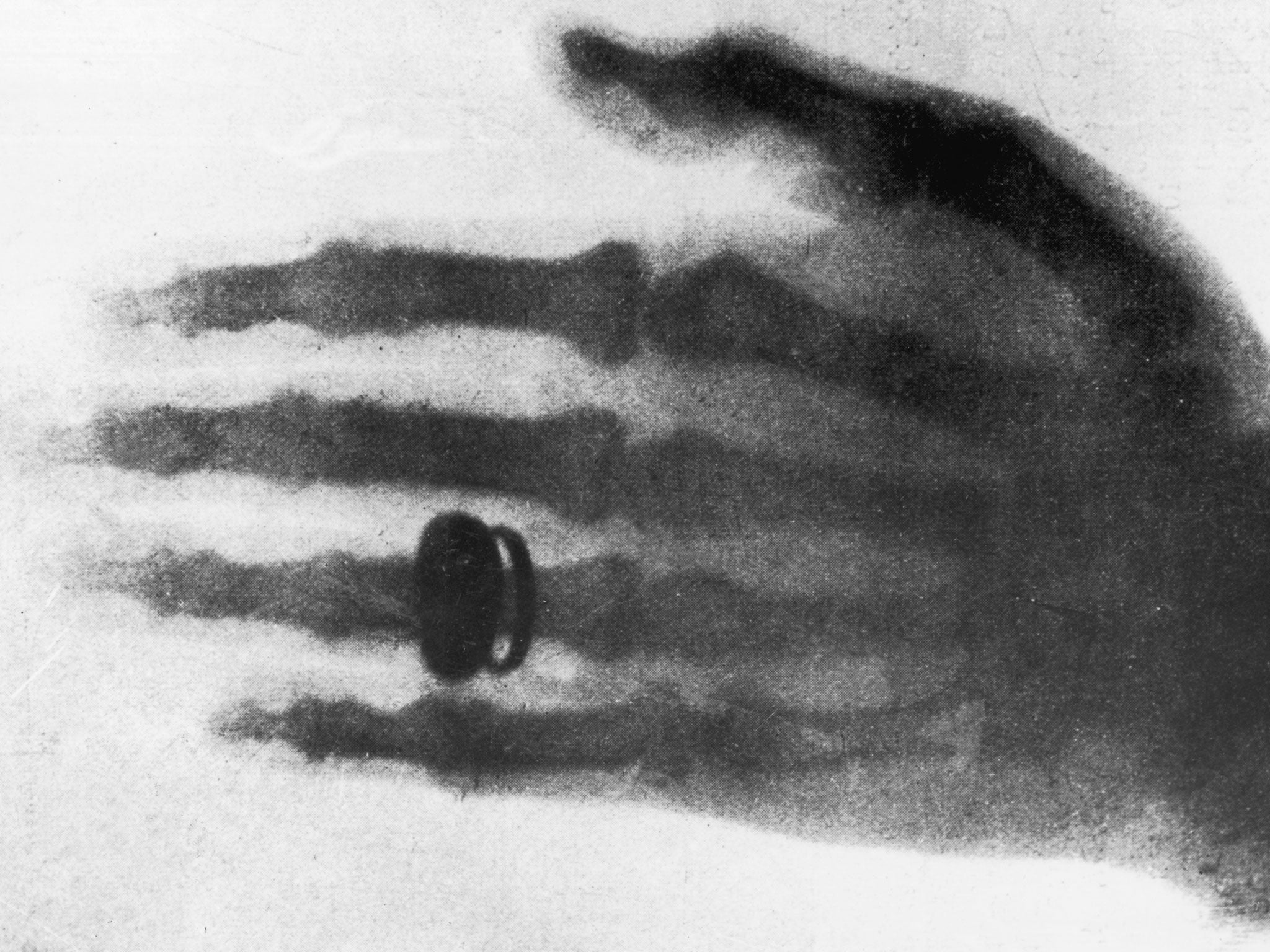The first X-ray photograph: Rhodri Marsden's Interesting Objects No.86
Physicist Wilhelm Röntgen invented the X-ray photograph while messing about at his home in Würzburg, Germany, with a Crookes tube and a sheet of paper painted with barium platinocyanide

One hundred and twenty years ago this weekend, physicist Wilhelm Röntgen found himself messing about at his home in Würzburg, Germany, with a Crookes tube and a sheet of paper painted with barium platinocyanide, as you do. The unexpected illumination of that sheet of paper commenced a feverish two months of work, culminating in his presentation to the world of the first X-ray photograph.
What happened during those weeks is largely unknown, because when Röntgen died he stipulated that all his laboratory papers be burnt. But we do know that he X-rayed a set of weights, a piece of metal and, famously, three days before Christmas 1895, the left hand of his wife Anna Bertha. On seeing the picture, she is reported to have said "Ich habe meinen Tod gesehen" ("I have seen my death").
Röntgen called the new ray "X", signifying the unknown. He presented a paper ("On A New Kind Of Ray") to the University of Freiburg on 1 January. It reached the Berlin Physical Society on the 4th, the Austrian press on the 5th, and on 16 January 1896 The New York Times described how "men of science in this city are awaiting with the utmost impatience … the particulars of Röntgen's discovery."
Röntgen only wrote two more papers about his rays, and declined speaking opportunities. Max von Laue, the physicist who in 1912 "cleared up the nature of X-rays", bumped into Röntgen on a train several years later. "The impression of his discovery had so overpowered him," he recalled, "that he never recovered."
Röntgen received the first Nobel Prize for physics, in 1901, but gave away the prize money. The world of medicine was grateful that he never patented his invention. He died in poverty in 1923.
Subscribe to Independent Premium to bookmark this article
Want to bookmark your favourite articles and stories to read or reference later? Start your Independent Premium subscription today.

Join our commenting forum
Join thought-provoking conversations, follow other Independent readers and see their replies